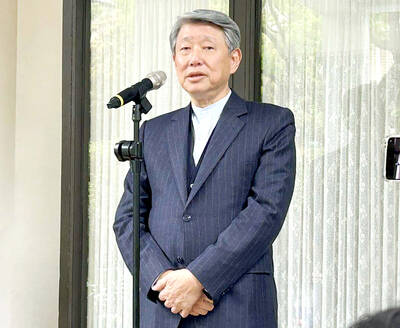US stocks managed gains for a second straight week, as investors clung to a blind faith that politicians would resolve the looming “fiscal cliff” crunch.
The pending threat of higher capital gains and dividend taxes next year, whatever the resolution of the negotiations between Democrats and Republicans, failed to dim sentiment. Indeed, some stocks, like Costco and Walmart, advanced because of it, as firms announced special dividends and moved forward regular payouts to before Dec. 31, to avoid an expected increase in the tax rate.
The broad-based Standard & Poor’s 500 rose 0.5 percent for the week to end at 1,416.18. The Dow Jones Industrial Average of 30 blue chips gained 0.12 percent to 13,025.58, while the NASDAQ Composite added 1.46 percent, ending the week at 3,010.24.
Although the business and financial communities continued to warn the US Congress and the White House to reach a deal for averting the economy-crunching spending cuts and tax hikes of the so-called fiscal cliff, investors did not appear too worried.
Gains during the week were broad-based, with the crucial retail sector adding 2 percent on the back of solid sales at the beginning of the holiday shopping season.
However, weak consumer spending in the third quarter and the October to early November period — when the devastation from superstorm Sandy distorted the picture — made forecasting a challenge.
“Between Sandy and the fiscal cliff, the pace of consumer spending and business investment is really unclear,” Joel Naroff of Joel Naroff Economics said.
“The implication is that the October and even November numbers have to be evaluated carefully and may not reflect the true nature of either the consumer or the economy,” he said.
“Given the noise from Washington and the fears of tax changes to come, movements in the equity markets during December may also bear no relation to underlying economic trends,” he added.
Chris Low of FTN Financial said the markets were trading the headlines from Washington on nearly a minute-to-minute basis.
“The traders love volatility because that’s what generates their revenues, but for investors it is just frustrating,” he said.
Economists said that, after third-quarter growth was revised higher to a 2.7 percent annual pace, the signs are that the fourth quarter could slow to less than half that pace — especially as businesses hold back from investment due to fears over the fiscal cliff.
“Indeed, the Fed’s latest Beige Book report indicated that regional business activity is being held to a ‘measured’ pace in part by fiscal cliff uncertainty and the impact of Hurricane Sandy. As such, we expect Q4 growth of only around 1 percent,” IHS Global Insight economists Paul Edelstein and Nigel Gault said on Friday.
That makes economic data in the coming week more important for formulating a picture of the final quarter. Tomorrow will see releases of construction spending data for October, auto sales numbers for last month and the Institute for Supply Management’s (ISM) manufacturing index for last month.
On Wednesday come productivity figures and the ISM services sector index, and then on Friday the crucial job creation and unemployment numbers for last month. Those could show a hit from Hurricane Sandy.
However, the political showdown over the fiscal cliff and deficit reduction will still dominate the news.
“Markets will probably have to accept a few more weeks of brinkmanship before a deal is done. In the meantime, statements by public officials will swing equity markets to and fro,” IHS said.

MULTIFACETED: A task force has analyzed possible scenarios and created responses to assist domestic industries in dealing with US tariffs, the economics minister said The Executive Yuan is tomorrow to announce countermeasures to US President Donald Trump’s planned reciprocal tariffs, although the details of the plan would not be made public until Monday next week, Minister of Economic Affairs J.W. Kuo (郭智輝) said yesterday. The Cabinet established an economic and trade task force in November last year to deal with US trade and tariff related issues, Kuo told reporters outside the legislature in Taipei. The task force has been analyzing and evaluating all kinds of scenarios to identify suitable responses and determine how best to assist domestic industries in managing the effects of Trump’s tariffs, he

TIGHT-LIPPED: UMC said it had no merger plans at the moment, after Nikkei Asia reported that the firm and GlobalFoundries were considering restarting merger talks United Microelectronics Corp (UMC, 聯電), the world’s No. 4 contract chipmaker, yesterday launched a new US$5 billion 12-inch chip factory in Singapore as part of its latest effort to diversify its manufacturing footprint amid growing geopolitical risks. The new factory, adjacent to UMC’s existing Singapore fab in the Pasir Res Wafer Fab Park, is scheduled to enter volume production next year, utilizing mature 22-nanometer and 28-nanometer process technologies, UMC said in a statement. The company plans to invest US$5 billion during the first phase of the new fab, which would have an installed capacity of 30,000 12-inch wafers per month, it said. The

Taiwan’s official purchasing managers’ index (PMI) last month rose 0.2 percentage points to 54.2, in a second consecutive month of expansion, thanks to front-loading demand intended to avoid potential US tariff hikes, the Chung-Hua Institution for Economic Research (CIER, 中華經濟研究院) said yesterday. While short-term demand appeared robust, uncertainties rose due to US President Donald Trump’s unpredictable trade policy, CIER president Lien Hsien-ming (連賢明) told a news conference in Taipei. Taiwan’s economy this year would be characterized by high-level fluctuations and the volatility would be wilder than most expect, Lien said Demand for electronics, particularly semiconductors, continues to benefit from US technology giants’ effort

‘SWASTICAR’: Tesla CEO Elon Musk’s close association with Donald Trump has prompted opponents to brand him a ‘Nazi’ and resulted in a dramatic drop in sales Demonstrators descended on Tesla Inc dealerships across the US, and in Europe and Canada on Saturday to protest company chief Elon Musk, who has amassed extraordinary power as a top adviser to US President Donald Trump. Waving signs with messages such as “Musk is stealing our money” and “Reclaim our country,” the protests largely took place peacefully following fiery episodes of vandalism on Tesla vehicles, dealerships and other facilities in recent weeks that US officials have denounced as terrorism. Hundreds rallied on Saturday outside the Tesla dealership in Manhattan. Some blasted Musk, the world’s richest man, while others demanded the shuttering of his